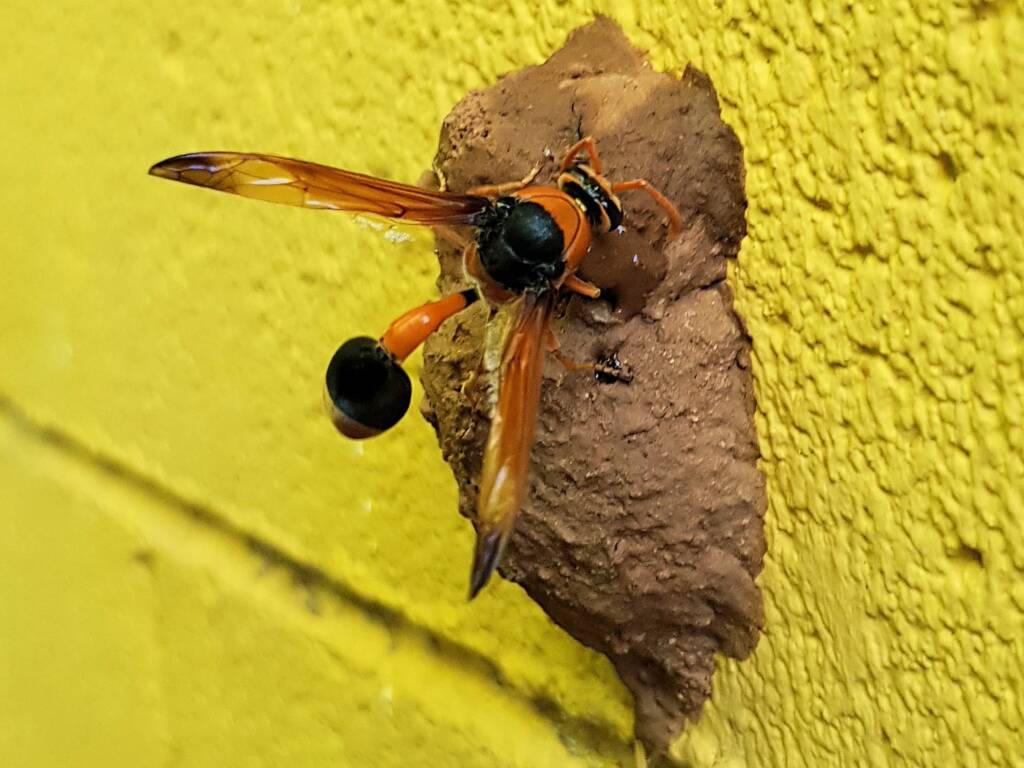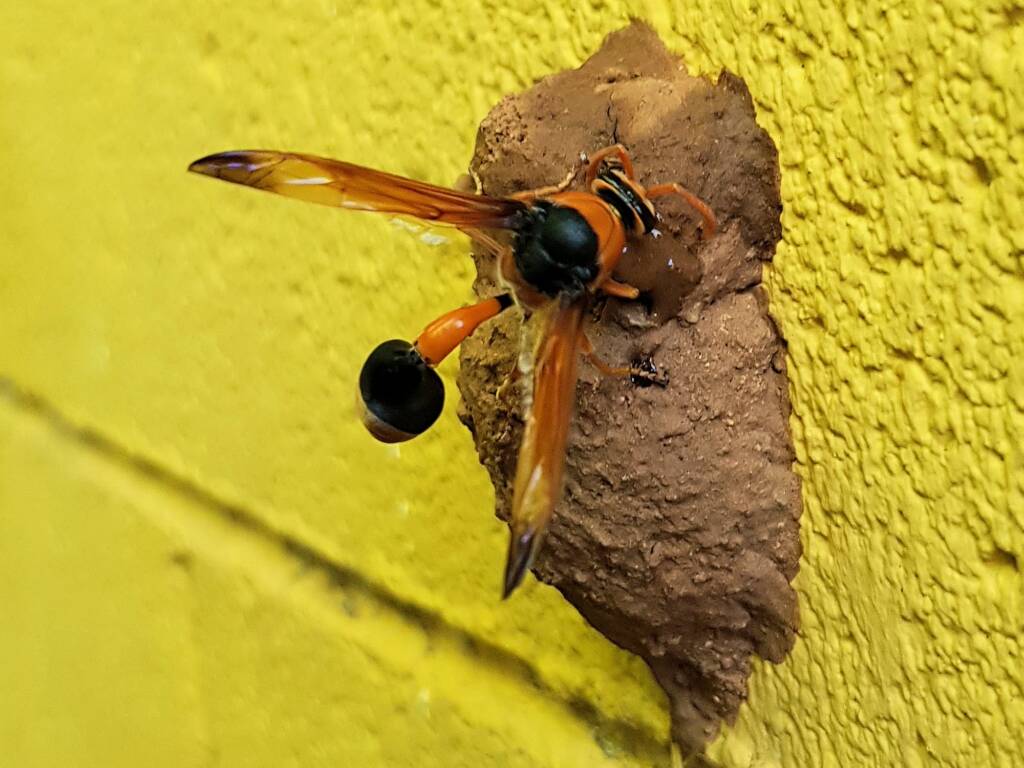WaspsWasps Index Australian Large Wasps Australian Mud Nest Wasps Mud Wasp Velvet Ants Abispa ephippium Acarozumia amaliae Aulacidae Australodynerus Bembix Bembicinae Blue Hairy Flower Wasp Braconidae Chrysididae Cryptocheilus bicolor (Orange Spider Wasp) Delta latreillei (Potter Wasp) Eumeninae Ferreola handschini (Orange-collared Spider Wasp) Flower Wasps Gasteruptiid Wasp Hairy Flower Wasps Isodontia (Grass-carrying Wasp) Lissopimpla excelsa (Orchid Dupe Wasp) Mutillidae Paralastor sp. Pseudabispa bicolor ssp. nigrocinctoides Radumeris radula (Yellow Hairy Flower Wasp) Radumeris tasmaniensis (Yellow Hairy Flower Wasp) Sceliphron laetum Thynnid Wasps Tiphiidae Yellow and Black Wasp
The common name Mud Wasp is commonly interchanged with the common name Potter Wasp or Mud Dauber (referring to either Abispa sp. or Delta latreillei, previously classified as Eumenes latreilli). Australian Mud wasps are sometimes referred to as Australian Hornet, which is not correct, as there are no native hornets in Australia.
In Australia, the term ‘hornet’ is often applied to any large wasp, particularly if it should be black and orange. However, this use of the term is incorrect as true hornets do not occur in Australia.
Hornets and Large Wasps, Entomology Factsheets, Western Australian Museum
The Mud Wasp and Mud Dauber, belong to the genus Abispa sp that includes similarly coloured wasps with orange and black markings.

The common names of Potter Wasp, Mud Wasp, Mud Dauber, alludes to the fact that the material they use to build their nests is sourced from available local mud, which can vary in colour from the reddish brown to sandy coloured soil. They gather the mud into a ball shape that they carry back to the mud nest that they are working on.

Whilst the making of the mud nest is said to be a solitary effort by the female mud wasp, there have been observations where at least two mud wasp are working on the same mud nest. It is most likely that they are both female mud wasp (possibly from within a single generation).
The ball of mud is applied to the mud nest, either to create more nesting chambers or to seal a chamber or to finally smooth off the recent addition to the mud nest (check out our blog a penthouse with a view…) to see the mighty efforts of an Orange-tailed Potter Wasp (Delta latreillei)… a master builder.
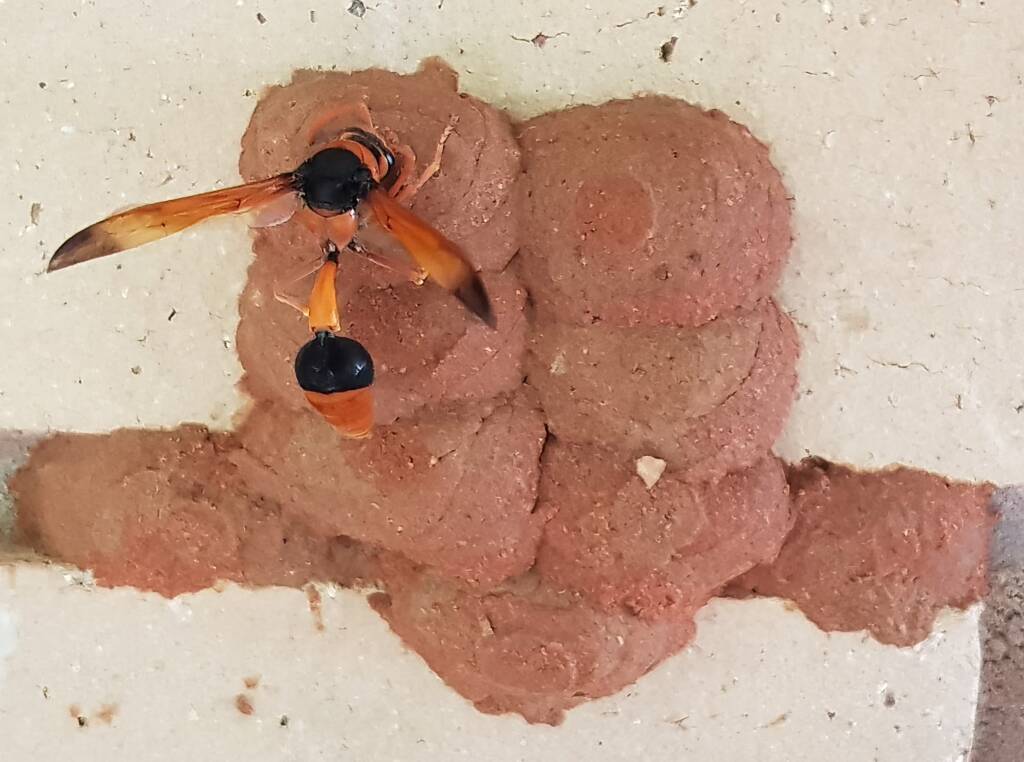
The mud wasp can often be seen at water sources such as fish ponds, most likely taking in a small amount of water, then flying off to gather some mud. The female wasp gathers the soft mud using her mandibles (which is rolled into a small mud ball) and held between her front legs, as she flies off to the nest site. The mud ball is then pressed into position, smoothing it out (most likely with a mixture of saliva and water), shaping it as required onto the nest.
One of the differences between the common name Mud Wasp and the Mud Dauber, who also build their nests from mud, is that the Mud Dauber wasp fill their nest cells with paralysed spiders to provide food for their larvae.
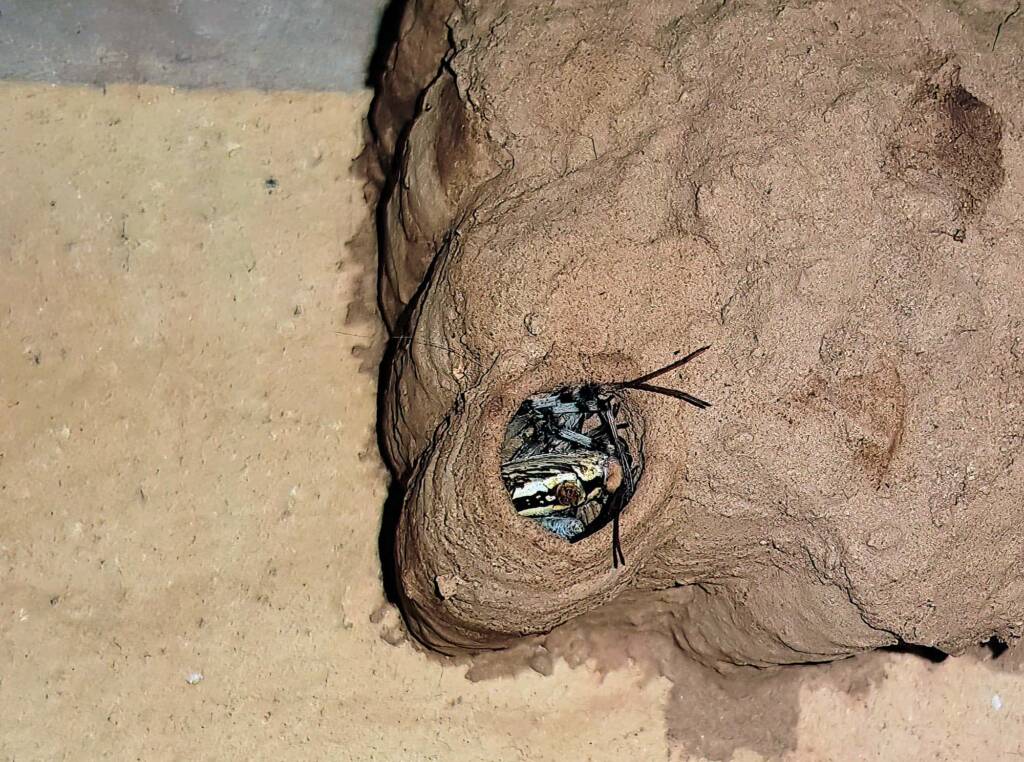

These particular Australian wasps are solitary insects, that belong to the vespid family Vespidae of insects that are native to Australia. This family of insects is said to number nearly 5,000 species, that include eusocial wasps as well as the many species of solitary wasps.
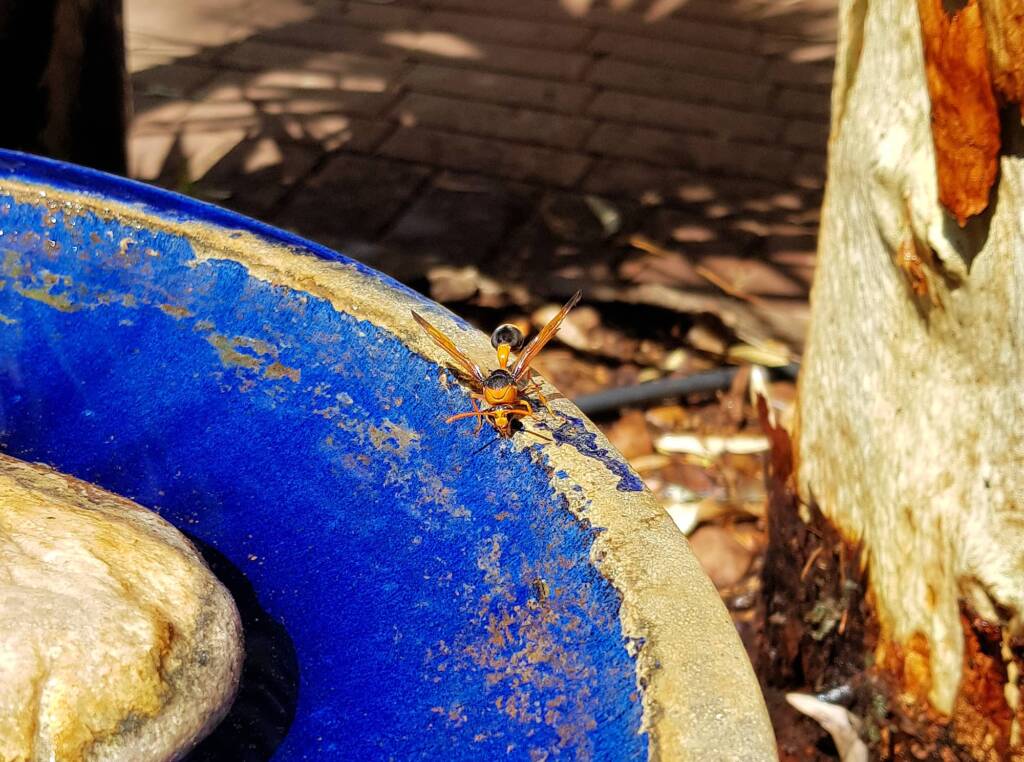


Found throughout Australia, and quite common in Central Australia, the Mud Wasp, Mud Dauber, Potter Wasp are usually found where there is access to water, including ponds and pools, especially as these provide a source of water, from which they mix with clay type sand to create a mud paste for making their nests and adding to existing mud nests.

The nests of the Potter Wasp are varied in size and shapes, subject to the different species of mud wasps. They are often built against the walls of buildings, along the mortar line of bricks, window frames, even a small nest can be built on a hook. Some species do build their nests on the ground.
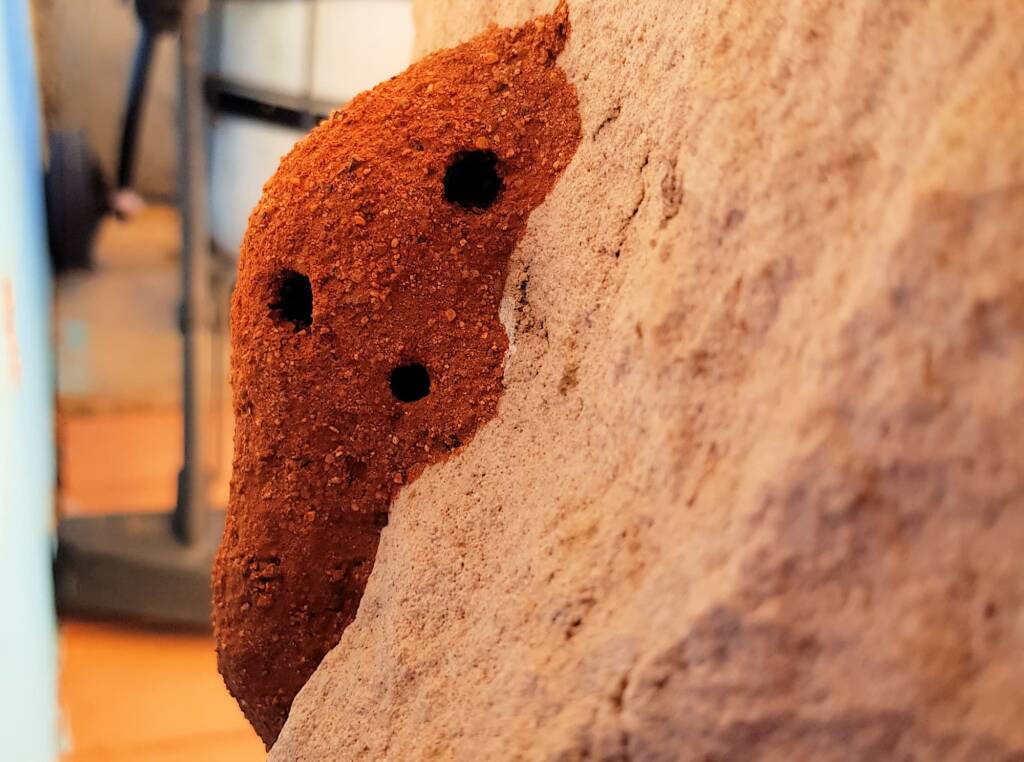

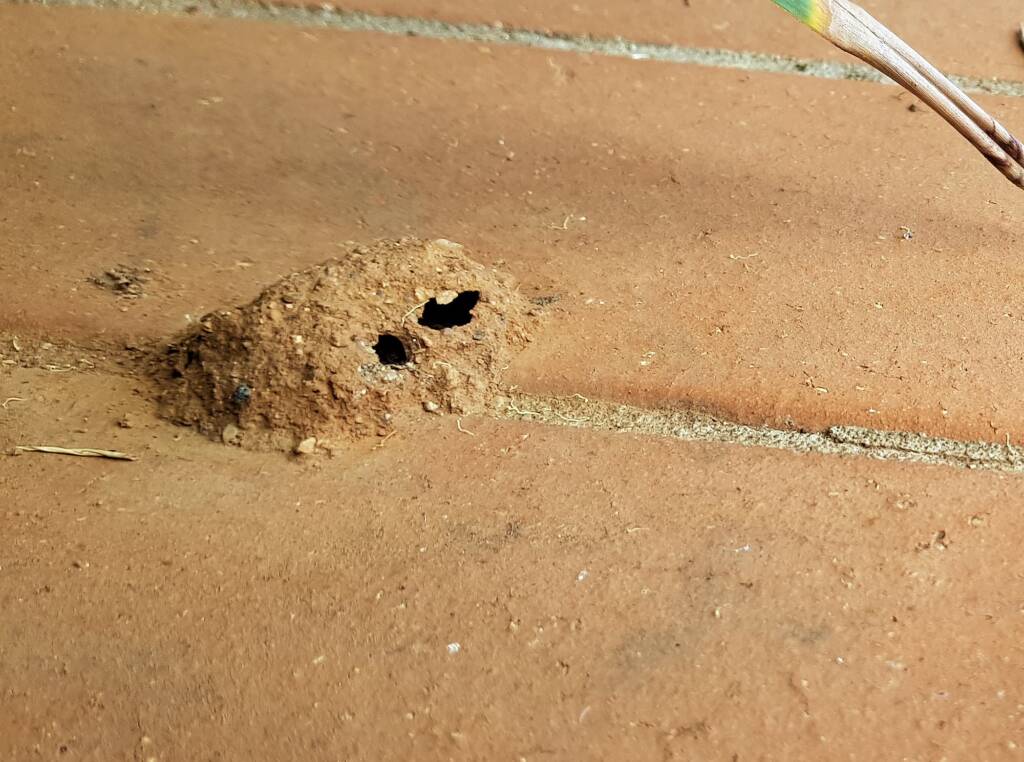






Many Mud wasps and Potter wasps appear to come back to the same nest year after year, adding more mud to the existing structure. Although current research appear to say that these wasp may only live between 3 to 6 months, so it may be that either the off-springs are revisiting the mud nest, or other other wasps of the same species are taking advantage of the mud nests.
Holes are created within the mud where they place their prey (usually a caterpillar, except for the Mud Dauber who catches spiders) for the larvae to feed on. The hole is then sealed. The evidence of the larvae having pupated into the adult wasp and having left the nest is the exposed hole opening, where it was previously sealed.
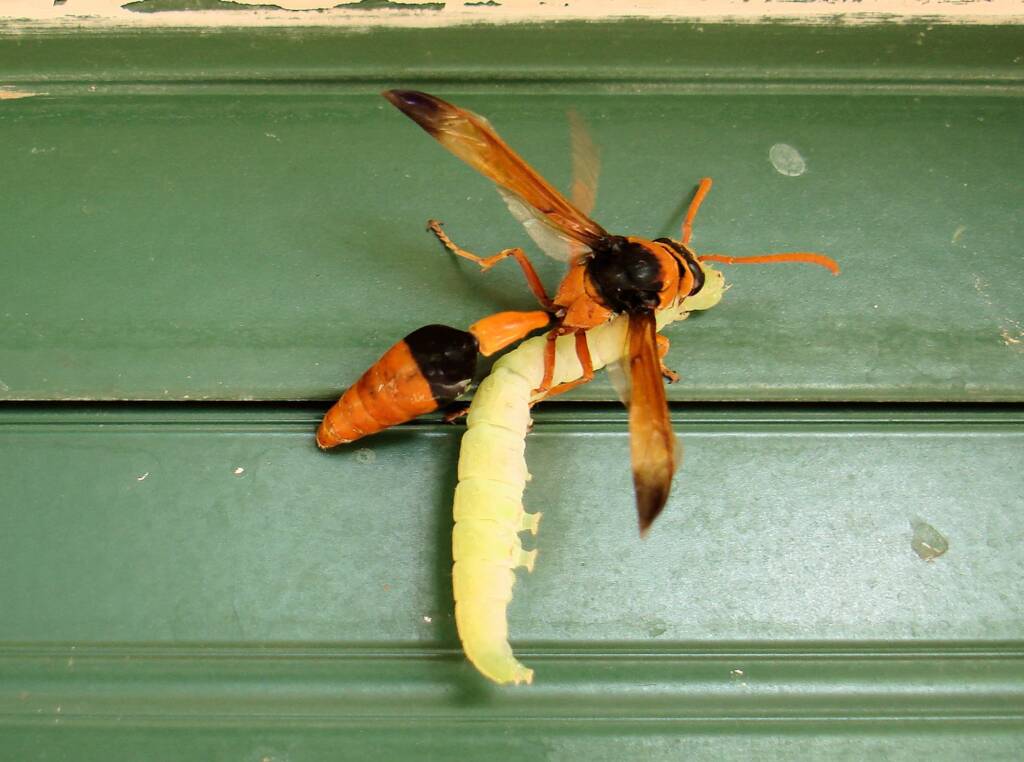


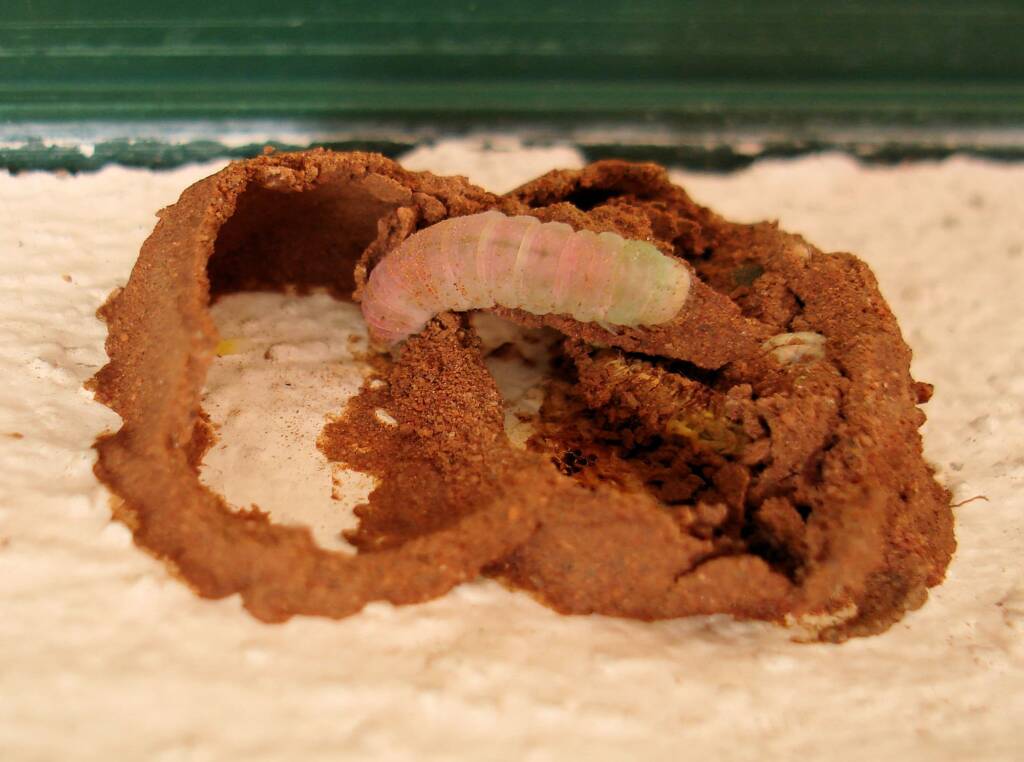
You can read more information on the mud nest and potter wasps here:
Also check out our blogs:
- Scientific classification
- Kingdom: Animalia
- Phylum: Arthropoda
- Class: Insecta
- Order: Hymenoptera
- Family: Vespidae
- Subfamily: Eumeninae
- Genus: Abispa
Footnote & References
- Mud Dauber and Potter Wasps, Queensland Museum, https://www.qm.qld.gov.au/Explore/Find+out+about/Animals+of+Queensland/Insects/Wasps+and+bees/Common+species/Mud+Dauber+and+Potter+wasps
WaspsWasps Index Australian Large Wasps Australian Mud Nest Wasps Mud Wasp Velvet Ants Abispa ephippium Acarozumia amaliae Aulacidae Australodynerus Bembix Bembicinae Blue Hairy Flower Wasp Braconidae Chrysididae Cryptocheilus bicolor (Orange Spider Wasp) Delta latreillei (Potter Wasp) Eumeninae Ferreola handschini (Orange-collared Spider Wasp) Flower Wasps Gasteruptiid Wasp Hairy Flower Wasps Isodontia (Grass-carrying Wasp) Lissopimpla excelsa (Orchid Dupe Wasp) Mutillidae Paralastor sp. Pseudabispa bicolor ssp. nigrocinctoides Radumeris radula (Yellow Hairy Flower Wasp) Radumeris tasmaniensis (Yellow Hairy Flower Wasp) Sceliphron laetum Thynnid Wasps Tiphiidae Yellow and Black Wasp
InsectsBees Beetles Blattodea Butterflies Coleoptera Cicada Crabronidae Diptera Dragonflies & Damselflies Formicidae Hemiptera Heteroptera (True Bugs) Mango Planthopper Moths Orthoptera Orthopteroid Processionary Caterpillar Stink Bugs, Shield Bugs and Allies Syrphidae Wasps Water Scorpion (Laccotrephes tristis) Witchetty Grub







